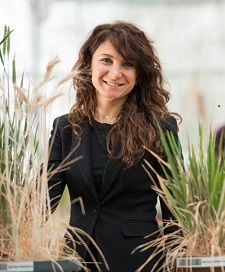Scientists have used machine learning to find new ways to identify and pinpoint disease in poultry farms, which will help to reduce the need for antibiotic treatment, lowering the risk of antibiotic resistance transferring to human populations.
The study, published in Springer Nature, was led by Dr Tania Dottorini from the School of Veterinary Medicine and Science and Future Food Beacon at the University of Nottingham. The research is part of the FARMWATCH project, a £1.5m partnership between the University and the China National Center for Food Safety Risk Assessment.
The rapid increase in poultry production to meet growing demand in China has resulted in extensive and indiscriminate use of antibiotics. This has led to a worrying increase in cases of antimicrobial resistance (AMR) diagnosed in animals which could potentially spread to humans, via direct contact, environmental contamination, and food consumption.
With antibiotic resistance now one of the most threatening issues worldwide, effective and rapid diagnostics of bacterial infection in chicken farming can reduce the need for antibiotics, which will reduce epidemics and AMR.
In this project, researchers in Nottingham collected samples from the animals, humans and environment in a Chinese farm and connected slaughterhouse. This complex 'big' data has now been analysed for new diagnostic biomarkers that will predict and detect bacterial infection, insurgence of AMR, and transfer to humans. This data will then allow early intervention and treatment, reducing spread and the need for antibiotics.
The study produced three key findings. Firstly, several similar clinically relevant antimicrobial resistance genes (ARGs) and associated mobile genetic elements (antibiotic resistance genes able to move within genomes and between bacteria), were found in both human and broiler chicken samples. In particular, eleven types of clinically important antibiotic resistance genes, with conserved mobile ARG gene structures were found between samples from different hosts.

Dr Dottorini said: "These similarities would have been missed if we only used large-scale conventional comparative analysis, which, in fact, showed that microbiome and resistomes differ across environments and hosts. Overall, this finding suggests the relevance of adopting a multi-scale analysis when dissecting similarities and differences of resistomes and microbiomes in complex interconnected environments."
Secondly, the study showed that by developing a machine learning powered approach integrating metagenomics data with culture-based methods, the team found the existence of a core chicken gut resistome that is correlated with the AMR circulating in the farms. These results supported the hypothesis that correlations exist between resistance phenotypes of individual commensal and pathogenic bacteria and the types of ARGs in the resistome in which they exist in.
Finally, using sensing technology and machine learning, the team uncovered that the AMR-related core resistome are themselves associated with various external factors such as temperature and humidity.
Dr Dottorini said: "The food production industry represents a major consumer of antibiotics, but the AMR risks within these environments are still not fully understood. It is therefore critical to set out studies and improved methods optimised to these environments where animals and humans may be in close contact. Precision farming, cost-effective DNA sequencing and the increased adoption of machine learning technologies offer the opportunity to develop methods giving a better understanding and quantification of AMR risks in farming environments."
The full study can be found here.






